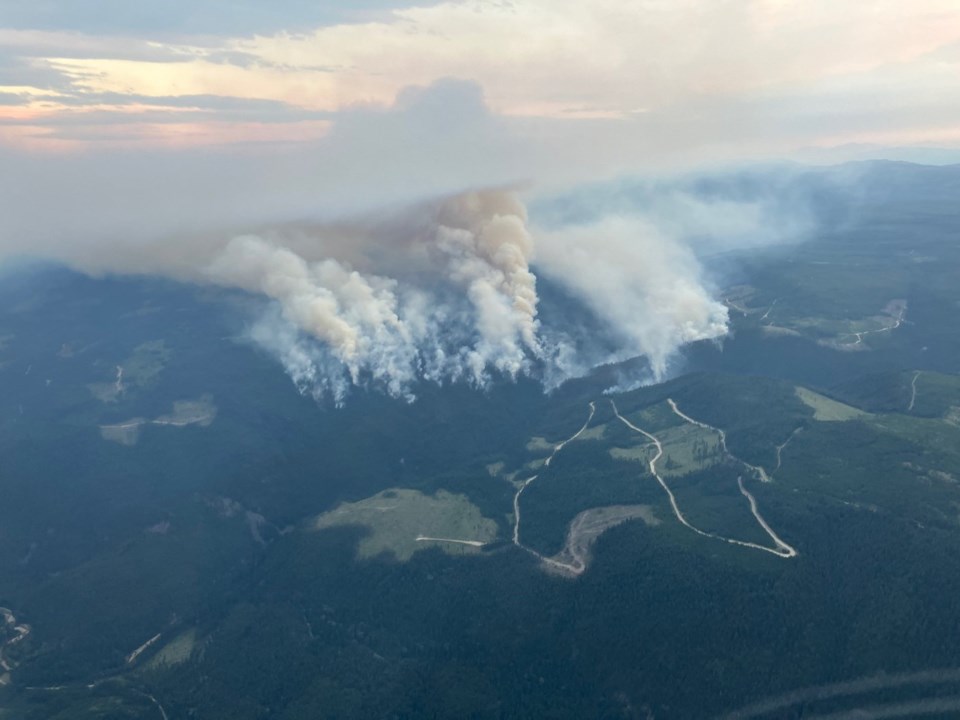VANCOUVER — Recent rains and cooler temperatures have knocked down wildfire activity in parts of British Columbia, especially in the north, but another hot and dry spell is expected to settle in across the southern Interior, officials said Tuesday.
Emergency Management Minister Bowinn Ma said the weather has offered "much-needed relief" to communities and firefighting crews. Several evacuation orders and alerts have been lifted around the Antler and Shetland creek blazes, she said.
Still, she said wildfires are still threatening communities, particularly in the southeast, and the province, wildfire crews and emergency responders are doing "everything that they can do" to keep people safe. More than 10 search and rescue crews have been deployed to support evacuations in the past week, Ma said.
"Despite cooler weather, I want to encourage everyone to continue СŔ¶ĘÓƵ vigilant and СŔ¶ĘÓƵ prepared. As we know, the wildfire situation can change quickly, and we may see more fires as temperatures warm up again in the coming days."
About 1,350 people are currently under evacuation orders, primarily in the central Kootenay region of southeastern B.C., Ma told a news conference.
A further 2,800 people have been told to be ready to leave on short notice.
Cliff Chapman, the director of provincial operations with the BC Wildfire Service, said rain had "knocked down" fire activity in the northern half of the province.
Conditions have improved to the point that the province is lifting campfire bans in the Prince George and Northwest fire centres effective at noon on Thursday.
Forests Minister Bruce Ralston said the prohibitions would be reinstated if conditions change for the worse.
In the south, Chapman said there has been enough rain to provide crews with "operating time" on several "challenging" fires that have led to evacuation orders.
But the reprieve appears to be fairly short lived, as Chapman said forecasts suggest a "hot, dry pattern" will return in August.
He said another high-pressure ridge could build over B.C. by this weekend, especially in the south, ushering in a return to seasonal or above-seasonal temperatures.
"Right now, we're forecasting for sort of that Kamloops Fire Centre, СŔ¶ĘÓƵeast Fire Centre, we're going to see a return to the low- to mid-30 degree temperatures," he said, adding that will make for "very challenging" firefighting conditions.
"We are looking at probably the next 10 to 14 days of seeing little to no rain in the southern part of the province, and that may also push into the north."
Many of the roughly 340 wildfires currently active throughout B.C. are concentrated in the southeast, where hundreds of residents of the communities of Slocan and Silverton were forced out of their homes due to the danger.
But the Regional District of Central Kootenay downgraded the order for 185 properties in Silverton and 17 properties in the surrounding area to an alert on Tuesday. This comes as the nearby Aylwin Creek wildfire continues to burn out of control.
The district also rescinded the evacuation alert for the village of New Denver, noting the wildfire service has now classified the nearby Wilson Creek fire as under control.
The number of active fires is down from more than 400 last week, with 46 per cent of the current blazes classified as burning out of control.
The wildfire service says 90 per cent of the active fires were sparked by lightning storms that swept over much of the Interior in the last few weeks.
The number of people deployed to fight the fires has grown substantially in the last two weeks to just over 1,500 firefighters and more than 200 structure protection personnel. Just over 190 aircraft are also СŔ¶ĘÓƵ used in the battle.
This report by The Canadian Press was first published July 30, 2024.
The Canadian Press




